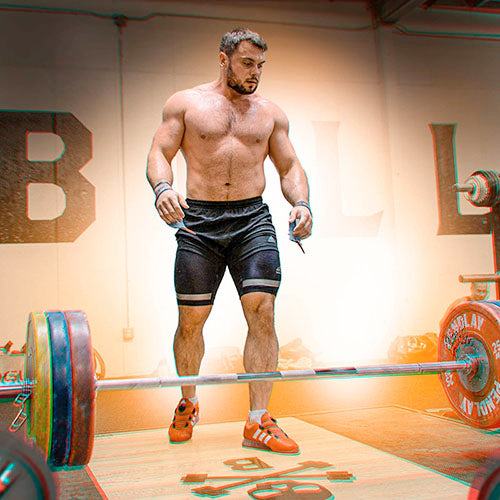Weightlifting coaching is primarily aimed at improving athletic performance: the number of kilograms an athlete can lift in the snatch, clear and jerk. The end result of sports activities is a mixture of factors: genetics and method, motivation, group size, coaching program, etc. Each athlete concentrates on their own pool of components, but in the end the final result is slowed down or stopped altogether.
Weightlifters can be saved by a simple rule of biomechanics: power is always directly proportional to muscle mass. The more muscle mass a person has, the greater his power potential, regardless of other training methods.
All weightlifters, who started training in their childhood (12-14 years old), must go through a weight gain and weight transition stage. Children grow up. Their skeletons, muscles and tendons naturally develop and become heavier.
One of the most common mistakes in youth coaching is that athletes are told to limit their weight gain to remain within the weight category they belong to. This can be a great way to “catch medals” at the junior level, but it could also cause injuries and stop your progression later. I believe that in junior age it is acceptable to “reduce” body weight before the competition by 2-3 kg. If an athlete’s load during preparation is greater than three kg above the load category and his fats content material is between 10-15% then this indicates that the body “asks for” muscle development and shouldn’t stop.
For grownup athletes (over 20 years old), maintaining and gaining muscle mass is vital for an effective and safe coaching program.
What weightlifters are looking to increase muscle mass?
For those who have missed it. Since the Soviet weightlifting era, there has been a height-weight model. This article will help you determine if your weight is normal.
It is important to remember that during training, athletes of light weight classes (up to 73 kg) usually weigh 1-2 kg more than their respective class and heavier ones by 3 – 3.5 kg. The “reserve”, which is due to the fact that, in the backdrop of large coaching masses, more water is stored within the muscles, contributes to an improved restoration. The extra kilos can be lost before the competition, due to the reduced weight, “reduced carbohydrates”, and the pre-competition enjoyment. This will help you become faster and less stiff. If, for example, you are in the 96 kg category, but your training weight is only 93 kg, you will probably lose 5 kg. This can make it much easier to compete at the C&J and snatch.
How do you know when to switch to a new weight category?
If you’ve been competing in this class for more than three years, your results will remain the same. However, if there is a need to grow and carry additional kilos, it’s now time to build some muscle.
The collection of “high-quality muscle mass” is composed of three components:
- Sports activities mode (rational daily routine and 8+ hours of sleep per day);
I’m happy to inform you that we will soon be ready with some great information.
- A periodization and coaching program that is satisfactory.
More than 1000 athletes have completed my first Muscle Acquire coaching program in this time. We’ve gathered a lot of feedback over the years, both on periodization, cargo balancing and design, as well as on visualization, technical design and design. All of this was taken into account when I developed a new model 2.0.
What makes this coaching program exclusive?
Programming takes into account the specificity in muscle recruitment during weightlifting. We should not sacrifice speed, coordination, or mobility when gaining muscle. This system includes the optimal amount of load for snatch, C&J, and workouts to develop flexibility and mobility.
The system is not very deep, but the volume and weight of the fundamental exercises creates maximum stress on large muscle groups, which in turn causes the body to gain weight.
This strategy allowed for a more balanced training cycle, which will contribute qualitatively to the rapid expansion of leads in weightlifting routines.
The coaching cycle lasts 5 weeks. Below I have listed the weekly goals to help you understand what athletes are looking for.
Week 1. Week 1. Aim: Load the main muscle groups and prepare your body for future large amounts of stress. This is why both weightlifting and total bodybuilding training are included.
Week 2. The goal is to perform a large amount of work in order to stress the muscles in a positive way. Preparation for pumping supersets and squat/pull selection. Massive mass, a smart vitamin strategy, as well as a focus on day-to-day self discipline will help you develop energetic muscles quickly.
Week 3. Week 3. Aim: light deloading and recovery. Less activation, fewer workouts and units. This is not tapering. It’s a slight deload to aid in muscle recovery and increase. The number of mass is the best tool for a high-quality adaptation.
Week 4. Aim: deliver a giant quantity. Focus on a heavy training routine, including squats and pull variations as well as auxiliary and bodybuilding exercises. Each session also includes supersets to pump up the muscles even more.
Week 5. Week 5. Once again, a lot of work in the squats-and-pulls variation. You won’t get bored with these supersets, as they are an essential part of every exercise.
Every time my team and I introduce a new product for weightlifters or useful health athletes, we are happy to think that we are contributing to the improvement and progress of these sports.
I recalled a shaggy-dog story from my youth: whenever someone from our team gained a lot of weight, our coach would always say: “you might have gotten so large that it is now easier to jump over you than to get around you!”
I want all the required physique kilograms, and the majority of the barbell!
Muscle Achieve 2.0 is here!
Related Articles:
Top 5 Weightlifters Nutrition Mistakes
Six Rules for Muscle Mass Gain
IS INTERMITTENT FASTING BENEFICIAL OR HAZARD?
SUPPLEMENTS TO MASS GROWTH
You will be interested in:
Core exercise program
Overhead mobility program
Weightlifting Program for Masters
Weightlifting Program for 8 Weeks – Olympic Weightlifting
Bodybuilding weightlifting programs
Weightlifting for women is a program that has been designed by mothers.











